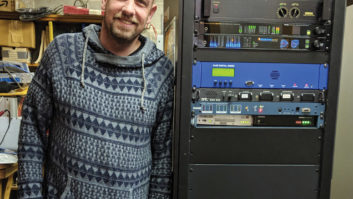
The author is managing director of Loughlin Meghji + Company, a bankruptcy and restructuring advisory firm.
The year 2009 was an inauspicious one for local television broadcasters, marked by several high-profile bankruptcies and other out-of-court restructurings. Ion Media, New Vision, Young Broadcasting, Equity Media, Pappas Telecasting and Freedom Communications all spent the better part of 2009 in bankruptcy court. Other broadcasters are still due for a restructuring (either in-court or out-of-court).
Bankruptcy court may well be even more crowded in 2010. Research conducted by Loughlin Meghji + Company over the past two years, coupled with our deep involvement in the radio and television industry, indicates that 2010 will be the bankruptcy/restructuring year for radio broadcasters.
It was not surprising to the LM+Co team when, at the end of 2009, both Citadel and NextMedia filed for bankruptcy protection — not because of the rumors swirling around the industry since mid-2009, but because the industry as a whole has been hurtling toward insolvency since the onset of the advertising recession in 2007.
That said, at some point advertising spending must rise again; however, it is doubtful that a rebound in advertising spending will be the panacea for the radio industry.
Ad recession and cash flow
There are two separate events that have ushered the radio industry to its current, economically unstable state: first, the ongoing advertising recession and its devastating effect on cash flows; and second, an excess of available advertising airtime.
Total advertising revenues for radio broadcasters will have fallen approximately 20 percent between 2007 and 2009 and are expected to drop by a total of 27 percent over the four-year period ending 2011, according to Zenith Optimedia. In 2009 alone, radio advertising revenue is projected to decline 14 percent, which translates into $2.7 billion less revenue for the industry.
The radio broadcasting industry is characterized by high fixed costs. While this is a very attractive economic characteristic in a rising revenue environment, it is equally or more economically unattractive in a falling revenue environment. LM+Co research reveals that approximately 78 percent of a radio operator’s costs are fixed (at least in the near term). This means that for each dollar of revenue lost, a broadcaster loses about 78 cents of cash flow — absent cost-cutting measures.
Radio station managers, CEOs and owners have not been sitting idly by over the past two years. Very much the contrary — they have been actively cutting operating costs and capital expenditures; but in a high fixed-cost business, it is impossible to save one’s way to solvency.
Most managers with whom we’ve spoken over the past year now feel that further cost-cutting will only harm the local feel of the radio franchises, which is a recipe for value destruction.
It is doubtful that core radio revenues will improve in 2010 (ex political advertising) as the domestic economy struggles to regain its footing. In addition, the historically strongest radio advertisers — automotive, financial services and entertainment/ dining — remain deeply challenged.
It was refreshing to hear Mary Quass, president and CEO of NRG Media, opine at the Dickstein Shapiro panel at the fall NAB Radio Show that the industry is suffering from an excess of advertising capacity.
Our research, based on traffic system data, shows that radio stations are selling between 40 percent and 60 percent of available advertising time with the remainder of the time allocated to sales incentive airtime for bundled pricing, internal promotions, public service announcements, barter, charitable contributions, etc. This “sell through” figure has been fairly stable over the past two to three years in the middle-market stations we evaluated.
On a stand-alone basis, a stable rate of advertising inventory sell-through is good news. In reality, viewed in an industry context, the data reveals that the industry is gripped in a nonsensical — and apparently unstoppable — price war.
Seasonally adjusted, real pricing for radio advertising has fallen by 20 percent to 30 percent over the past two years. The impact of price deterioration is exacerbated by increased competition from, for instance, TV and the Internet. This revenue-per-minute deterioration is ongoing, and getting worse in some markets.
Radio broadcasters have tried to fight back through price competition. In virtually every radio market, excess inventory is leading competitors to lower pricing. Radio operators making pricing decisions based on the actions of their competitors, not on their own seasoned business judgment.
But that’s not proven to be a winning strategy. This response, meant to preserve existing inventory sell-through rates (problematic as they are), only worsens a bad situation.
Stabilization
So what is the outlook for radio broadcasting in 2010?
Whether radio advertising spending will be up, down or flat in 2010 is not the issue. The advertising recession has already deflated industry cash flows, inflated leverage ratios and left many highly regarded station owners, operators and general managers with more than their share of sleepless nights in 2009. More are to follow in 2010 … unless new strategies are pursued.
The key solution to an industry turnaround is breaking the deflationary price-war cycle. If the war doesn’t end soon, local radio will continue to disappear, leaving only jukebox formats. This will create another step-down in value and, therefore, pricing power as well. Sooner or later, as this course is pursued, interest expense will exceed cash flow … and more bankruptcies and restructurings will follow.
The most effective course of action is to draw a line in the sand and stabilize unit pricing. Other solutions could include inventory reduction, either by reducing advertising slots or taking non-performing stations dark.
Will radio operators have the courage to pursue these solutions? Only time will tell.












